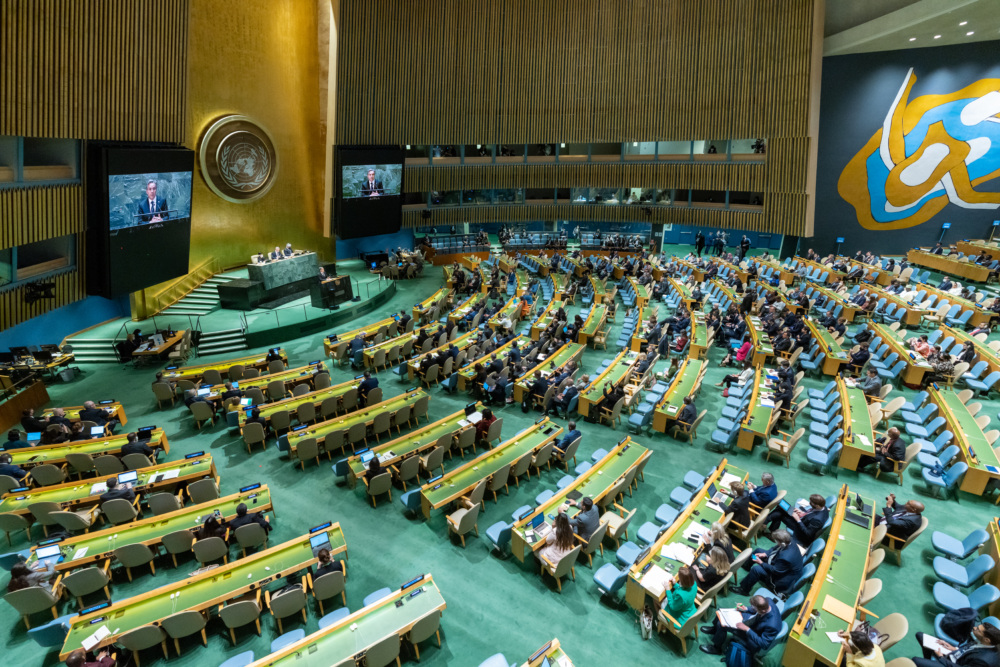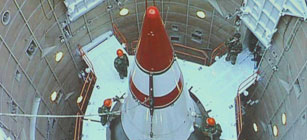This post was written by Daniel Cohen, an intern with NTI’s Global Nuclear Policy Program. Originally from New York, he is currently a graduate student at Georgetown University, where he is studying U.S. national security policy.
As China continues to modernize and expand its nuclear program, experts around the world are debating how to engage the country’s leaders in meaningful arms control negotiations. Given China’s reluctance to take part in a traditional process, there’s little doubt that a new approach is needed. The question is: What could work?
On January 26, the Carnegie Endowment for International Peace (CEIP) explored the issue in a webinar, “Engaging China on Nuclear Arms Control,” featuring James Action and Tong Zhao from CEIP; Nicola Leveringhaus from King’s College, London; and Nobumasa Akiyama from Hitotsubashi University, Tokyo. CEIP’s Fiona Cunningham moderated.
The main sticking point for China seems to be the disparity between its stockpile and those of the United States and Russia. As Leveringhaus pointed out, “[China] traditionally has always said the United States and Russia have primary responsibility to reduce their nuclear arsenals. That’s because they have the largest arsenals.”
Indeed, the United States and Russia together possess over 90 percent of the world’s nuclear weapons, and while they each have eliminated thousands of nuclear warheads since the end of the Cold War, both still maintain around 4,000 deployed and non-deployed warheads. By comparison, China has, at most, a few hundred.
Last year, when the Trump administration attempted to widen the bilateral 2011 New Strategic Arms Reduction Treaty (New START) agreement between the United States and Russia into a trilateral one, China flatly rebuffed the suggestion. “China has no interest in joining the so-called trilateral negotiations, given the huge gap between the nuclear arsenal of China and those of the US and the Russian Federation,” said Fu Cong, head of the Chinese Foreign Ministry’s arms control department at a July 2020 press briefing.
For a more promising way forward, Acton suggested that if the disparity in numbers made limiting warheads a non-starter, then perhaps it would be best to pursue an agreement that targets fissile material, the highly-enriched uranium and separated plutonium needed to make atomic weapons. “If the U.S. concern is about so-called Chinese sprint to parity…you don’t necessarily have to deal with this problem directly by limiting Chinese warheads or weapons. You can deal with this problem on the fissile material end… The U.S. and China could agree to a bilateral cutoff in fissile material production… and that they further commit to talks over targeted verification measures.” This idea received general support from the panel, though Akiyama questioned whether it would be possible to construct a meaningful verification regime and to separate China’s civilian and military nuclear fuel cycles.
Zhao approached the problem from an asymmetric capabilities standpoint. Describing the composition of each side’s nuclear arsenal, Zhao pointed out that, “The U.S. is very strong in terms of strategic nuclear weapons, but weak in terms of land-based medium-range missiles. China is very strong in the latter, but relatively weak in terms of strategic nuclear weapons.” To address this disparity, he proposed combining these two categories of weapons under a single central limit that would include the categories of weapons addressed by both New START and the now-defunct Intermediate-Range Nuclear Forces (INF) Treaty. The ultimate aim of the proposal was balance, ensuring that each side saw an equal benefit, which Zhao claimed would help keep China from appearing to be the junior partner in the talks.
Leveringhaus’ proposal meanwhile differed markedly from Zhao and Acton, focusing not just on bilateral U.S.-China agreements, but on broader regional considerations that would require addressing, among other things, Japan’s plutonium stockpile and India’s nuclear weapons.
Two broad points underpinned these disparate proposals: that China’s concerns must be taken into consideration, given its reticence to negotiate thus far, and that the intricacies of the U.S.-Chinese relationship and the wider geopolitical landscape in Asia make for a highly complex situation. The panelists discussed whether a U.S.-China nuclear agreement could be compartmentalized, or if it needed to be embedded in a wider dialogue addressing ballistic missile defenses, antisatellite weapons, conventional missiles, and cyber capabilities.
In response to an audience question about using sanctions to break the nuclear impasse with China, Akiyama noted that not only are the American and Chinese economies deeply intertwined, but so are the economies of China and the closest U.S. allies in the region including Japan, the Republic of Korea, and the Philippines.
While fairly optimistic that there is a workable path to exploring these issues with China, the panelists agreed that formal arms control negotiations are not likely in the immediate future and cited more immediate political and economic issues that are on the U.S.-Chinese agenda. All four panelists noted China’s muted interest in bilateral arms control and said the new Biden administration likely would prioritize Russia, Iran, and North Korea in its arms control and nonproliferation agenda, with a longer-term approach toward engaging China.




